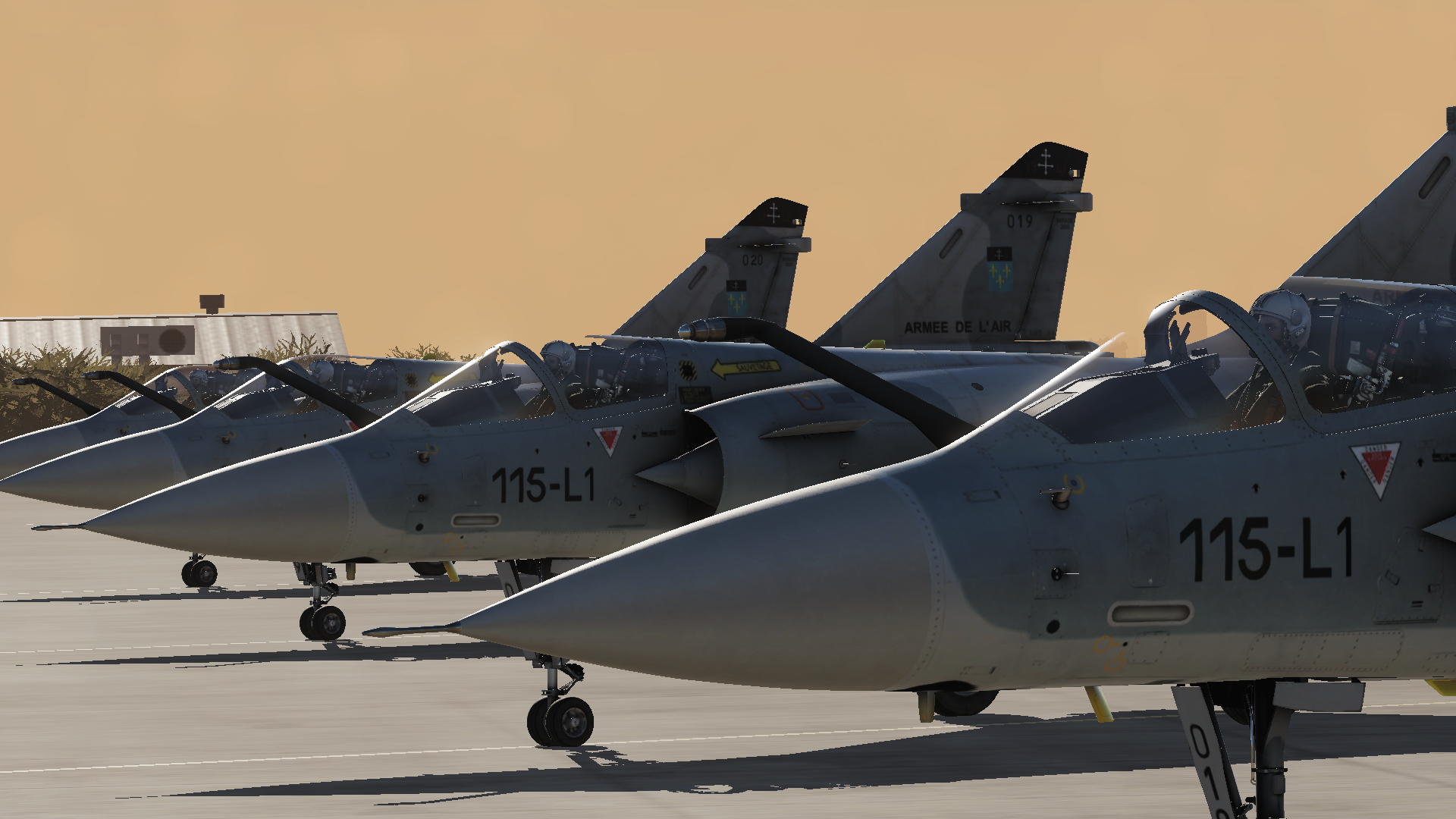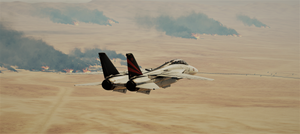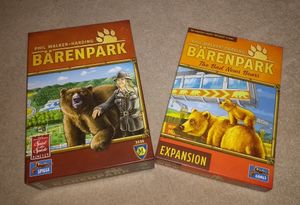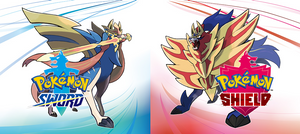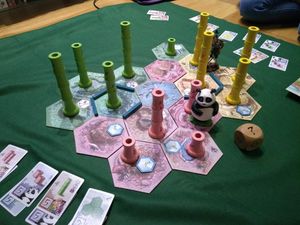Down the Rabbit Hole is a series of ramblings by the Space Cats on niche and unconventional games (and other media), and what is ultimately appealing about them.
The first flight sims I enjoyed were from the late 90's/early 2000's. Predominately from the developer and publisher Novalogic. This was a golden age for "milsim" gaming, with the likes of F-22 Lightning II, Armored Fist 2, MiG-29 Fulcrum and the Delta Force trilogy. You could find these games front and centre of the video games displays at any supermarket, along side the ever popular Microsoft Sidewinder joystick. Certainly they were not up there with Quake and Half-Life in sales, but it was still very much mainstream PC gaming.

Coming into the new millennium, the popularity of these games began to dwindle. Favoured peripherals were discontinued, and the torch was instead passed on to more high-octane and arcade-like gaming series such as Ace Combat and Battlefield. I did not really have an interest in flight sims during this decade. The titles available were few and far between and the genre accepted its "niche-ness", putting spectacle last in terms of graphics and gameplay, and becoming somewhat inaccessible to all but the most hardcore flight sim fans.
Recently, that has all started to change. The newest hardcore combat sim titles look stunning on a modern gaming PC. They embrace the prevalence of online multiplayer to create huge, dynamic and persistent online arenas, all while striving for the highest quality of fidelity and realism for the proper nerds. However, as we will see, this rebirth does not come without some teething issues.
I have grown to appreciate these modern sims while in search for some really challenging and tactical competitive multiplayer. Through the likes of DOTA II, Fractured Space and PUBG, the thing that always brought me back was how the high stakes, skill based gameplay and need for quick strategic decision making gave rise to some incredibly exciting and rewarding moments. I was never particularly a fan of the "on-rails" bombastic adrenaline train of many FPS games such as the Modern Warfare series, or even the (in my opinion) rather repetitive multiplayer they have to offer. Yet, with DOTA II and other MOBAs, no two matches were the same and they always felt like a rather satisfying mental workout... even if the tilts were brutal. Two particular titles of combat flight sims that I have grown fond of, offer the same drug but without being constrained to arbitrary rules or gameplay balancing.
These two titles are DCS: World and the IL-2 Great Battles series. The former has an emphasis on Cold War and modern era aircraft, while the latter deals only with WWII theatres.
DCS: World
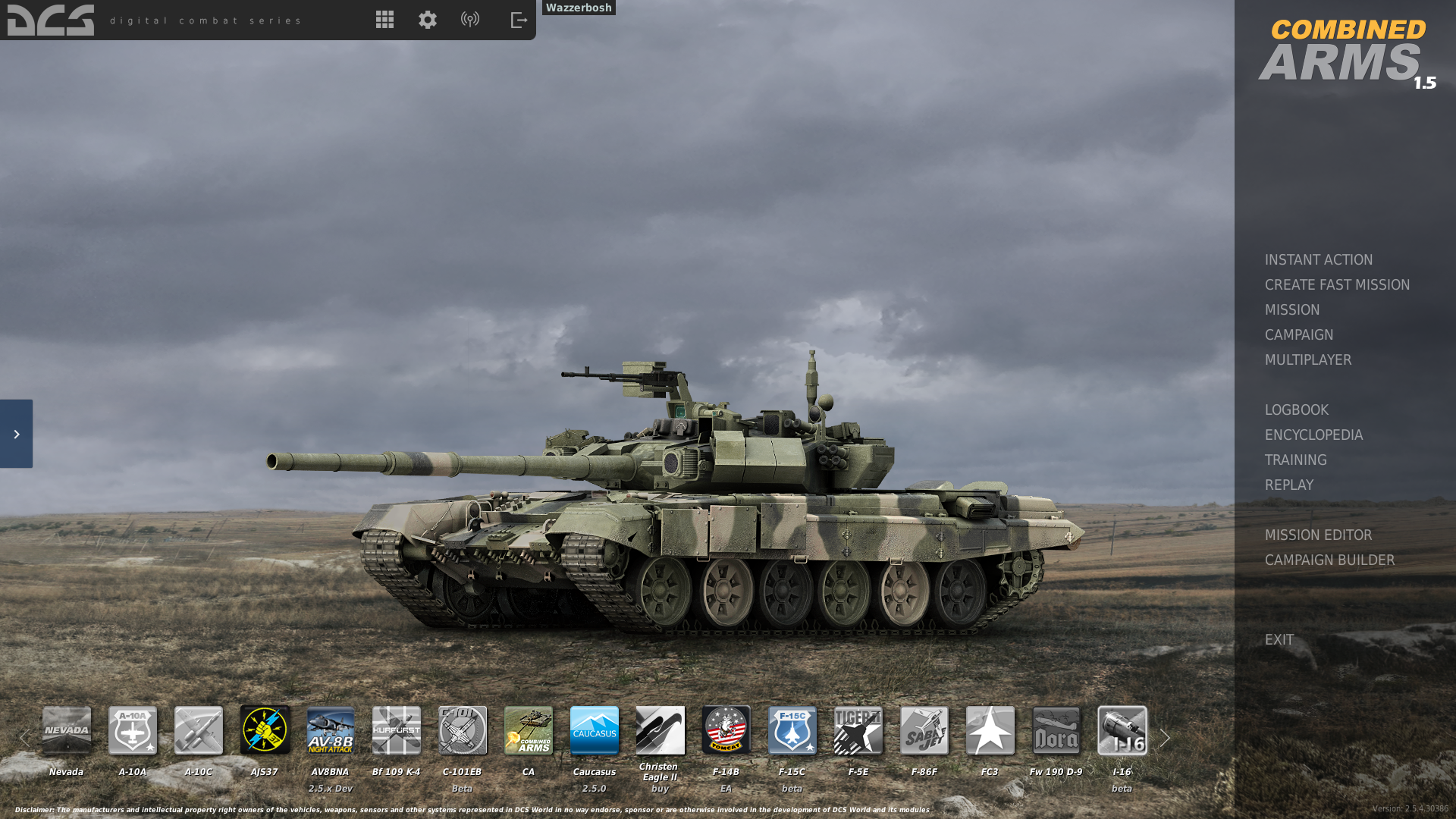
DCS is a "free to play" combat flight sim, with add-on modules and aircraft developed in-house by Eagle Dynamics, and a few licensed 3rd party developers. I say "free to play" as the base game offers only the game engine and a couple of free aircraft. In practice it is more of a demo than F2P as you'll need at least one of the addon modules to fully experience the sim.
This is where accessibility is still a problem. These modules are anywhere between 40 and 80 USD. This will put off anyone wanting to dip their toe into the genre quite quickly. That said, most of them go to 50-75% discount every 2-3 months during sales, which is the only time I've ever picked one up. Considering the fidelity and depth a single aircraft module has, it will provide many months of fun and study for about $20-30, which is a pretty good deal considering the average price of a triple-A title.
Speaking of fidelity, DCS is a simulator which focuses on realism. The game engine itself has most of the things you would expect from a flight simulator: weather simulation, atmospheric models, detailed flight model APIs and accurate physics, weapon effects and realistic radar. The aircraft modules themselves are often incredible feats of work. They take many years to develop and is done so along side the advice and testing of former pilots, engineers and other experts. These modules aim to reproduce the real aircraft as closely as possible - with every system, switch, weapon and flight behaviour being simulated with meticulous accuracy - as far as international arms regulations and official secrets acts allow (well, for the most part). All exterior and interior models are often laser scanned from in-service aircraft or museum pieces, and each button click or alarm sound recorded from the real cockpit. Some of these modules have even been adopted by various armed forces around the world as official simulation and training platforms for the aircraft.
The online MP scene of DCS attempts to merge these very anorakish study-sim elements with mainstream competitive play, to the point where it has a rapidly growing e-sports scene. There's an abundance of PVP servers, all hosted freely by the community. You find a server and click join. There are no lobbies and no match making. You're in with everyone else from the beginning. This is where the developers leave the shaping of the MP scene to the community and it's all the better for it. Whether you want to fight in the flight sim equivalent of a Quake arena, or take part in an MMO-like simulation of war, the options are all there. DCS exposes a powerful LUA scripting API where many things can be controlled. All kinds of information can be pulled from and pushed to the server by the host, which has given rise to hugely dynamic war theatres.
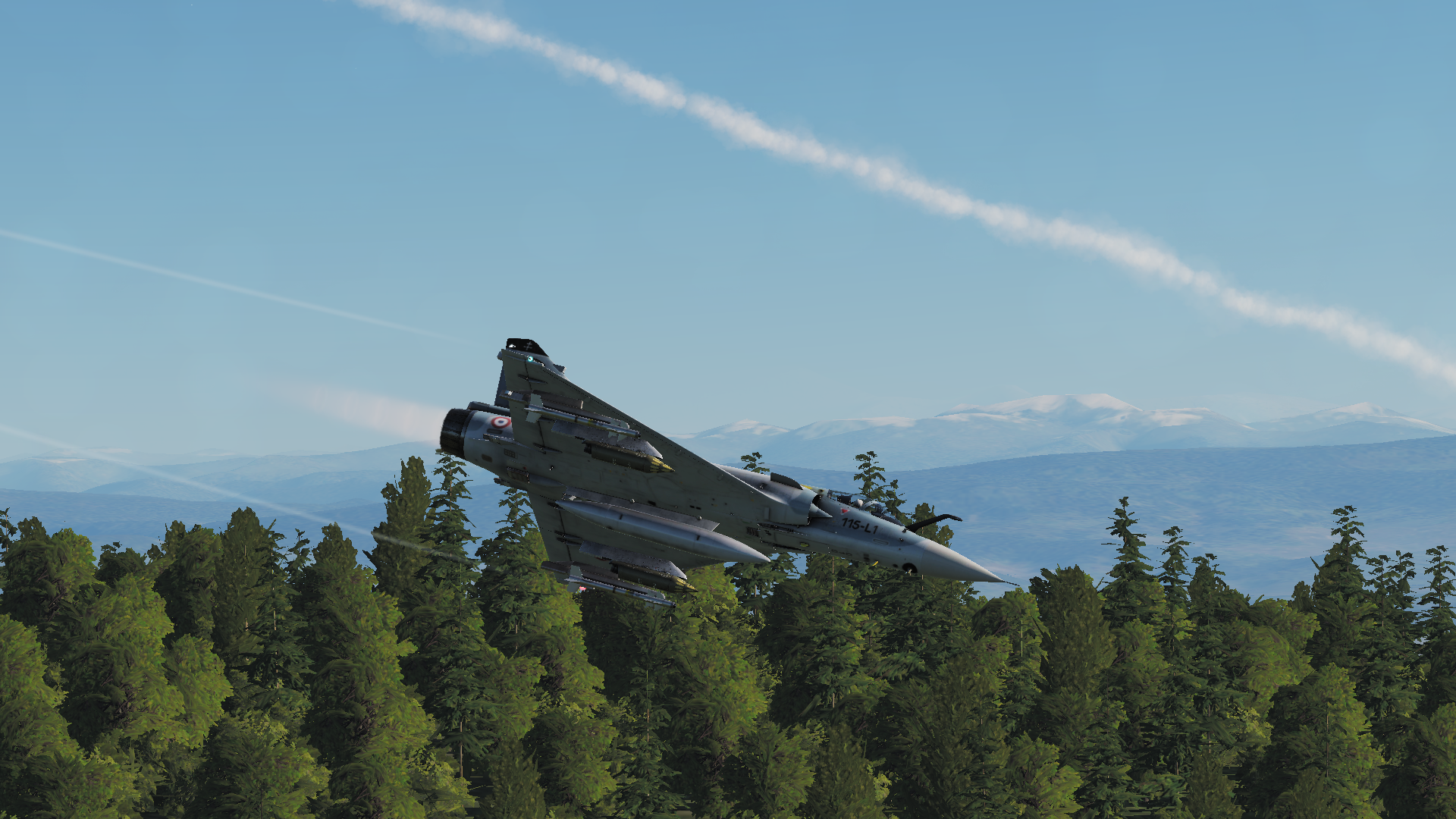
It's difficult to explain just how complex and rich these servers can be. Some simulate all out war in the Persian Gulf or Caucasus region where 70-80 concurrent players battle in the skies. On many servers, getting kills is not the most important goal. It's about capturing objectives, making it difficult for the enemy to respond to your advances, and bringing back your aircraft in one piece. Attrition mechanics are built in, with bases and airfields having limited supplies that need to be brought in by players in transport helicopters, or routed to key points via armoured convoys controlled by a battle commander in RTS fashion, by means of a tactical map.
Another player may be sitting in the "GCI" (Ground Intercept Controller) slot, where they have real time information from the airborne and ground based radar systems. They are able to task other players with objectives, and give them situational awareness and intercept instructions towards enemy aircraft. Those ground based radars giving the commander and GCI the information they need were probably hauled to their locations on top of mountains by player piloted helicopters. The amount of strategical coordination needed between players is immense, and the willingness of the player base to cooperate on such a level is even more impressive. The maturity of the community along with the diminished importance of personal scores drives the teamwork. When you state your intentions over the radio, you will often get numerous offers of assistance, such as the relaying of information on enemy positions, a fighter escort to keep you safe, or the deployment of troops behind enemy lines to recon your target.
These "war-sim" scenarios can persist for weeks as each side fights for air superiority, territory and kills. Progress, scores and battle maps are often displayed in real-time on the websites of the server hosts, allowing players to plan detailed missions, or just to have a quick look at the situation during their lunch break and see if what they did the previous evening had any effect on the war effort.

This naturally gives rise to some incredibly rewarding gameplay. Planning a mission with some friends to, say, strike an enemy airfield where some of you are up high in fighters offering protection, while others go in fast low to avoid enemy radar and bomb the runway, and a group of helicopters carrying troops to capture the base after the strike follow behind, is a lot of fun. As is watching the tactical replays afterwards to see what went wrong, what was done right and what you can do better next time. There are so many variables that it can go horribly wrong in countless ways, but if it all pays off, it's genuinely awesome.
Such missions are not conducted because the game told you to. There is no flashing element in your objectives list saying 'take this base'. It was decided by the players based on the current state of the battle, the resources and the effect it will have on the enemy.
Planning missions is a daunting affair. You are trying to outsmart a lot of real people on the enemy team, who are also trying to outsmart you. One quickly realises that a lot of skill in strategic planning is required, and this is probably why my success rates for such plans are rather low... nevertheless, each one feels like a rewarding learning experience and whether planning missions, flying in them or coordinating them in real-time, I often feel like I am learning something more than just how to win at a particular video game.
DCS comes with a mission editor that allows you to set up and control your own scenarios. This could be for a multiplayer server, or for a private campaign between friends. I've taken part in one such campaign with around 20 other people, in which the creator wrote an entire backstory, rules and guidelines to the fictional conflict in which we take part, and the story progresses between sessions in a way that reminds me very much of a table-top RPG.
Without even talking about the aspect of flying in what is still essentially a flight sim, we see that gameplay aspects ranging from an RTS to tabletop roleplay emerge from the its dynamic nature. In essence however there is the strategic gameplay, and then there is the tactical gameplay. Despite being a completely different platform entirely, I think these can be best described through the lens of something we all understand: DOTA. The strategic part is the meta-gameplay: the long term teamwork and coordination in achieving a goal - be it winning the "war" or capturing an objective. It's like the pre-game discussions in DOTA to decide on farming strategies, lanes and builds, except these strategies may persist anywhere from an hour to several days. The tactical element is in the flying itself. Positioning, elements of surprise, well timed coordination, situational awareness and a deep understanding of your aircraft's capabilities vs the enemies'. It's like the coordinated team-fight aspect of DOTA. You need to understand the strengths and limits of your "hero". You need to know how well it works with your other teammates', and you need to know where the enemy are and what good positioning looks like, and above all, you need good communication.
There is no intrinsic balancing in DCS however. Some servers will attempt some degree of fairness by restricting weapon types, or aircraft to a specific era such as early Cold War, but in general there's nothing stopping you from taking off in an aircraft 30 years senior than what the enemy is flying, and relying purely on the element of surprise and skill to beat them. Deliberately making yourself the underdog is a common occurrence in DCS multiplayer, since there is no grind and nothing to 'unlock'. For many the bragging rights from killing a modern American fighter jet from 2006 in a purely analogue 1960s ground striking aircraft from Sweden, inferior on paper in all the ways that matter, is reward enough.
For me personally, the peak of cooperative gameplay in DCS is with the "multicrew" aircraft, which require more than one player to operate. One such plane in the sim is the F-14 Tomcat (of Top Gun fame). It's a two seater fighter with a radar in its nose that's so powerful and complex, you need an extra crew member to operate it from the back seat, while the pilot up front does, well, "some of that pilot shit".
The Tomcat carries a massive missile known as the "Phoenix" which can hit enemies from 50+ miles away. Firing these beasts at enemies over the Strait of Hormuz from up in the Stratosphere, while Kitt flies from the front seat is some of the best multiplayer fun I've had in a long time.
All is not perfect in the skies over Georgia and Iran however. At its core, specifically the game engine itself, DCS is a relic of those underground days of flight sims in the mid 2000s. The current graphics engine looks great most of the time (and if you have the hardware to back it up) but the core engine is the product of incremental improvements of their game "Black Shark" released in 2008. Parts of the interface still feel like they are from this era, and the multiplayer scene exploded in a way that the developers did not predict, so the demons buried deep in the netcode sometimes make themselves known in densely populated servers (see the gif below...). Optimisation also leaves a lot to be desired. All but the audio runs on a single thread so even 32Gb, 2080 RTX, i9 rigs struggling to run it at max settings in VR.
That being said, DCS sees almost weekly updates to the core engine and modules and there are big plans in the works such as the implementation of Vulkan and a complete re-write of the netcode.
I've mentioned how engaging the gameplay (or meta-gameplay) is in DCS, but not much about the actually flying. It is a flight sim after all. Although the same principles apply to both DCS and IL-2, the joys of being at the controls in an air combat sims are best described when talking about the latter:
IL-2: Great Battles Series

IL-2 has been a series of WWII combat flight sims for many years, but their latest and very popular series is the "Great Battles" brings this long series into the mainstream spotlight. Each of the series is like an expansion pack. You need one of the packs to play, but can freely join any of the multiplayer servers with just one. Each pack offers a selection of aircraft from a particular period and key battle of WWII.
Unlike DCS, the aircraft in IL-2 do not have "fully clickable" cockpits. This means that although the fidelity and realism of the aircraft and how they fly is just as detailed, everything is controlled with key bindings rather than actually clicking buttons and levers in the plane itself. This encapsulates the main distinction other than era, between DCS and IL-2. IL-2 is more about the pure flying and fighting. The damage and flight models are very impressive, with metal fatigue and damage to internal components being very precisely simulated with the use of soft body PhysX materials. For instance, you can get shot through your wing but continue flying just fine. Then 20 minutes later you pull a tight turn and off rips your wing due to the damage and fatigue the struts inside it have received since being damaged by the shots. You can damage fuel lines, engine components and vital control surfaces. Springing an oil leak can make you blind as the cockpit glass gets sprayed with the leaking fluid, yet opening the canopy to try and peek your head out and see where your going just ends up with your goggles getting sprayed with it instead. Small details like this, along with amazing sound effects and a polished graphics engine make for very immersive and visceral gameplay.

With the old warbirds of IL-2: GB, you only have guns. No missiles or fancy modern weaponry. This really amplifies the need for pure flying skill. When fighting in close quarters with an enemy aircraft this is known as a "dogfight", and winning a dogfight requires a lot of skill and knowledge in the performance of your aircraft compared to the enemy's, and how things like angle of attack, lift, drag and the interplay between potential and kinetic energy affect your ability to gain the upper hand. It is the purest skill test out of any type game I have ever played, and lies somewhere between a physics problem and an art. Coming across a worthy opponent in an online battle, forcing them to make mistakes, capitalizing on them and winning is a rather gratifying experience.
Like DCS, IL-2 also hands off control of the multiplayer realm to the community. Here you can also find the dynamic wars, the air-quake servers and the realistic campaigns. There are fewer options, some by design and others limited by the technology of the WWII era, however with that simplicity comes a much shinier polish on the whole product. In contrast, DCS, for all its ambition and breadth, does feel like an early access game in many aspects. That said, I enjoy both for what they are and welcome the constant improvements both games are currently seeing.
Since the days of Space Cats DOTA ended, I've been chasing the dragon for something that offers the same rewarding experience. Something that is never quite the same from session to session, which relies fundamentally on teamwork with your mates and something that overworks your brain cells and multitasking abilities to the point where you always feel rather incompetent, yet slightly less so than the previous session. DCS and IL-2 offer this high in copious amounts, once the dauntingly large barrier for entry is scaled.
I have fully embraced this new wave of combat flight sims, which straddle the fence between pure dweebish obsession and mainstream gaming, for all the enjoyment they offer.
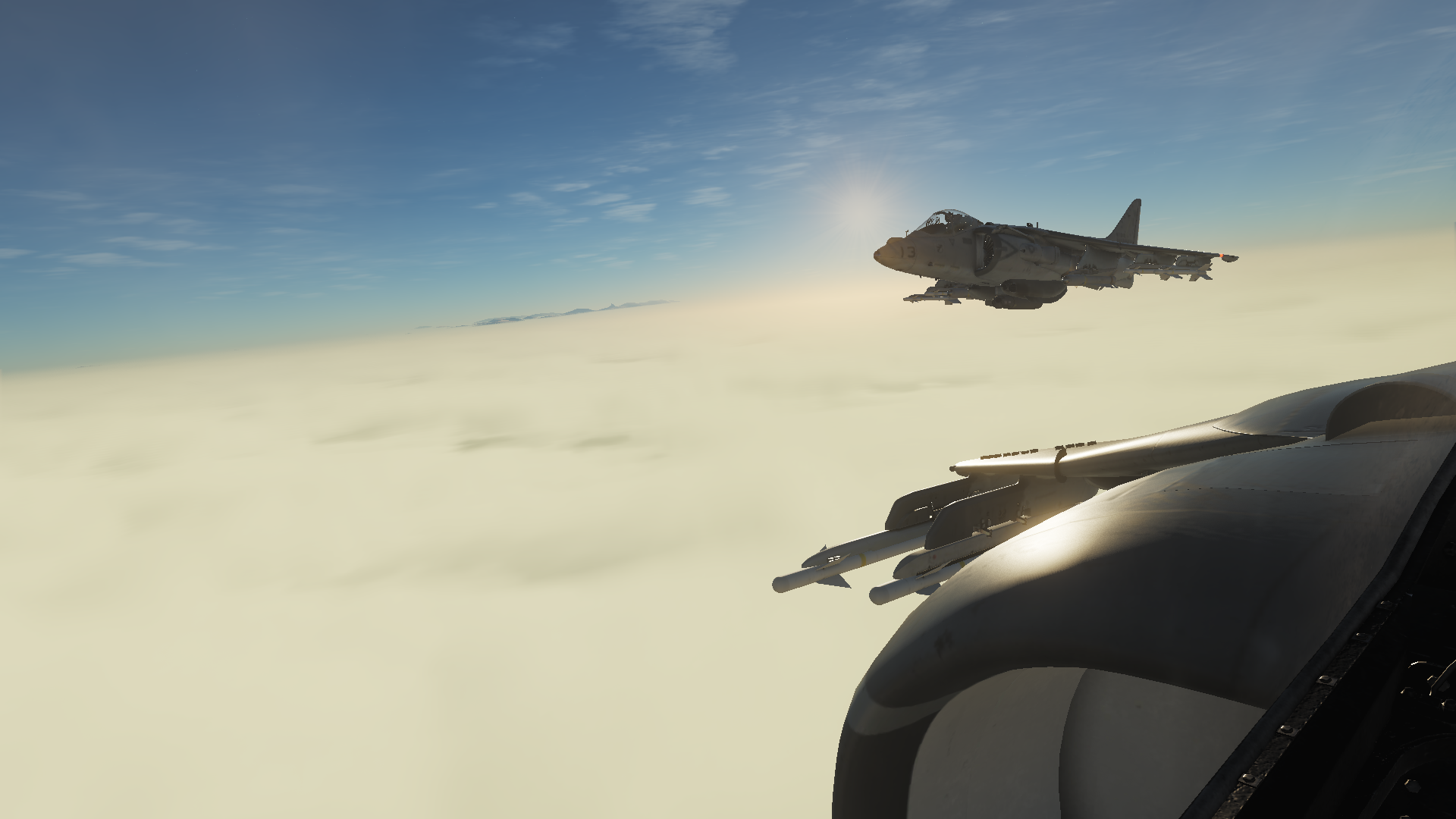
Footnote: Hardware
Such flight sims will likely always remain a niche due to the hardware requirements, particularly peripherals. It's possible to play either on a steam or even a playstation controller, but for those that start that way and enjoy the experience, it won't be long before they're pricing up joysticks, throttles and pedals on Amazon.
That said, a decent joystick and throttle can be acquired for around £40, in the shape of the popular T. Flight HOTAS X:

The main issues are the ball-joint of the stick becoming rather creaky after a couple of years of use and lack of switches and controls. Still, it could serve someone well for many years.
The other requirement is some way to look around. A thumbstick or D-Pad can be used for this but some form of head tracking gives a much better and more natural experience. For a while I was using a home made infrared LED head tracker. It cost me £10 in components and stuck to the side of my headphones. It worked like a charm and just as good as the pre-made commercial solutions such as TrackIR, which costs around £150.

Recently however, I was gifted a second hand Oculus CV1 VR headset. I run it on sub-par hardware, with which I get surprisingly comfortable performance by compromising my graphics settings and overclocking the hell out of my 970 GTX. Despite my flight sims not looking as pretty with my settings turned down, and the lower perceived resolution of the headset, I can never go back. The immersion of VR in flight sims is indescribable. The feeling of depth, speed, vertigo and genuine fear when about to experience a crash is second to none. In my opinion this will become the true way to fly simulators.

The problem is not that the hardware is expensive. The "buy-in" cost for a joystick, throttle and head tracking solution can be around £50, and you'll never need more than that... the issue is you may eventually want more than that.

